
by Mark | Oct 2, 2023 | Education, Employment Issues
In recent years, a significant transformation has been underway in the world of employment. The traditional belief that a college degree is an essential prerequisite for many jobs is being challenged like never before. In 2023, we are witnessing a remarkable trend where fewer companies are requiring college degrees when making hiring decisions. This shift is driven by various factors, including a changing job market, evolving workforce demographics, and a growing emphasis on skills and competencies. At Web Professionals Global, we see firsthand how non-degree programs like our certifications help professionals develop their skills and grow in their careers. Let’s dive into some of the factors that have led to this shift:
The Changing Face of the Job Market
One of the key drivers behind the decline in the insistence on college degrees is the evolving job market. As technology continues to reshape industries and create new roles, the demand for specific skills and competencies often takes precedence over formal education. Many of the fastest-growing job sectors for web professionals, such as technology, data science, and digital marketing, value practical skills and hands-on experience over traditional degrees.
The Rise of Skills-Based Hiring
Companies are increasingly recognizing that skills-based hiring can yield more suitable candidates for specific roles. Instead of relying solely on academic qualifications, employers are focusing on assessing candidates’ abilities and competencies directly related to the job. This approach allows companies to identify candidates who possess the skills necessary to excel in their roles from day one.
The Impact of Skills Shortages
Skills shortages in various industries have compelled companies to reconsider their hiring criteria. Many sectors in which web professionals work have seen demand for qualified workers exceed the available supply. To bridge these gaps, employers are becoming more open to candidates with relevant skills, certifications, or vocational training, even if they lack a traditional degree.
Remote Work and Globalization
The rise of remote work and globalization has made it easier for companies to tap into talent pools worldwide. This shift has forced organizations to reevaluate the importance of degrees when hiring remote workers. In a global talent market, companies are prioritizing skills, experience, and the ability to work effectively in virtual teams over traditional academic credentials.
The Changing Attitude of Millennials and Gen Z
Millennials and Gen Z workers, who now make up a significant portion of the workforce, have different perspectives on education and employment. Many of them question the value of accumulating student debt to earn a degree, especially when alternative learning paths and online certifications like those from Web Professionals Global are readily available. Companies are adapting to this generational shift by focusing on what candidates can bring to the table, regardless of their formal education.
Success Stories Without Degrees
Numerous high-profile success stories of individuals (including many Web Professionals Global members) who achieved remarkable career success without college degrees are inspiring both job seekers and employers. These stories highlight that talent, dedication, and a willingness to learn can often trump formal education. Companies are increasingly willing to take a chance on unconventional candidates who can demonstrate their potential and abilities.
2023 marks a pivotal year in the evolution of hiring practices. The decreasing emphasis on college degrees signals a broader recognition of the changing dynamics in the job market. Companies are looking beyond academic credentials to identify the talent, skills, and potential that candidates bring to the table. This shift not only benefits job seekers from diverse backgrounds but also allows companies to access a broader and more talented pool of candidates, ultimately driving innovation and success in an ever-changing business landscape.
Work With Us
If you are a student, young professional or experienced professional, certifications from Web Professionals Global can help you advance in your career. Take advantage of the shifting employment landscape and begin learning in-demand skills today that will help you in the global marketplace.

by Mark | Sep 13, 2023 | Web Accessibility, Web Pro News
Today we are taking a moment to remember Molly Holzschlag, an early pioneer of the web, who died in early September at age 60. Molly was a board member and instrumental in helping the World Organization of Webmasters (now Web Professionals Global) grow over the past decades, and she was a recipient of our Web Professional of the Year award in recognition for her passion for the web and forward thinking.
Our Executive Director, Mark DuBois, first met Molly in 2005 at a talk she gave at Joliet Junior College in Joliet, IL. Nicknamed “the fairy godmother of the web,” Molly was passionate about promoting web standards and accessibility long before others took up the cause. She traveled around the world to web conferences, always seeking opportunities to discuss the web and teach the next generation of web designers and developers.
She was a prolific author, writing over 30 books about the web. Her career included serving as Project Leader from 2004-2006 for the Web Standards Project (WaSP), a coalition that pushed browser makers such as Netscape and Opera to support modern web standards. Molly was an “invited expert” on the CSS Working Group of the World Wide Web Consortium, which is the body that determines the standards that run the web. Additionally, she served on the W3C HTML and GEO working groups and performed consulting services for multiple companies including Microsoft.
Molly never stopped fighting for her vision of a more egalitarian web and was once quoted as saying, “Anybody who creates a software product for the Web that is not usable and accessible by as many browsers as possible, by as many people as possible—we have failed the greater idea of the Internet.” Along with Dave Shea, she launched CSS Zen Garden in May 2003, which was “built to demonstrate what can be accomplished visually through CSS-based design.”
At Web Professionals Global, we will continue working toward web standards and accessibility, the causes that were so close to Molly during her life. Molly will be missed by our entire community of web professionals, and we offer our sincere condolences to all of her family and loved ones.

by Mark | Aug 21, 2023 | AI and Machine Learning, Education
One of the hottest topics in technology currently is artificial intelligence (AI), which is seemingly poised to affect many aspects of our lives. One of these areas is education, as schools, teachers, parents and students grapple with how to best deploy and manage AI tools in the classroom. At Web Professional Global we have many secondary and post-secondary students in our ranks, so we keep a close eye on developments that affect our members. In this article we will take a look at some of the challenges associated with education and AI and solutions for moving forward.
Overview
The rise of tools like ChatGPT has far-reaching implications, and in many cases it provides students with a quick and convenient way to complete classwork. These AI tools can write and edit essays, summarize articles, and complete other homework assignments. This allows students to “pass” subjects without actually understanding the underlying materials. This leads to students feeling like they can go through life without actually putting in hard work and learning valuable skills.
However, teachers can also use AI tools to their advantage. AI can help provide answers to students who have questions about material and provide feedback on assignments. Schools that have leveraged AI have also found that students are often more inquisitive when it comes to asking AI questions as it eliminates the fear of “asking a dumb question” in front of peers. As we move forward, it will be important to utilize AI so that it helps teachers in the classroom. AI will never replace teachers, nor should it. Students will always need a caring adult to lead in the classroom. We never want to place an AI system between the student and teacher, as we have already seen how generations have been affected by technology.
Keep in mind that many AI application programming interfaces (APIs) take a fair amount of creative license when answering questions. While it may seem like an AI tool is speaking factually and with authority, it might be spinning the answer a bit to reflect, for example, the beliefs of the person who programmed it. Also, remember that many AI tools are limited in what information base they are working from. For example, at the time this article was written the ChatGPT’s data set covers only information prior to September 2021. This means if you asked it to tell you the features of the iPhone 14 it would tell you that it doesn’t exist:

Our Response
We need to recognize AI as a tool first and make it a tool. AI should be a help and not a replacement. As humans, we are purpose driven. We are happiest when we have a purpose and are striving toward a goal. Some may fall into the trap of just letting AI do everything for them, and in doing so they will be relinquishing their own humanity. The rest of us will see AI as a tool, like the smartphone. You can use it to help you navigate your busy life, or, as many do, you can become overly dependent on it. Our fervent hope is that once again humankind rises above AI technology, recognizes it for what it is and does not allow it to seduce us to become its subject.
We believe these challenges provide an opportunity for those in the education space, especially students, to commit (or re-commit) to ethical behavior in the classroom and when working on academic projects. Web Professionals Global is part of the content authenticity initiative with Adobe and we also have a Code of Ethics that non-members can sign. Secondary and post-secondary students who complete coursework and receive our certifications all must adhere to the Code of Ethics, which includes the following:
Being open and truthful: Although we cannot guarantee that all of the members of the Web Professionals Global community subscribe to this code of ethics, as a professional association we aspire to instill in our members and non-members alike the highest ethical standards.
Respecting and protecting intellectual property: As web professionals, it’s our responsibility to protect the intellectual property rights of others including personal data and all electronic media and files. As web professionals, we have a duty and a fiduciary responsibility to protect this integrity by adopting and implementing best practices of our customer’s data and to keep it secure.
Being responsive: As web professionals we owe it to our clients and stakeholders to respond to inquiries in a timely manner. Web Professionals Global members should be candid about their available response time and communicate that to customers in advance.
Utilizing written communications: As web professionals it is our responsibility to effectively communicate with our clients and stakeholders. When making a request of the customer, or when making promises, put them in writing. Despite our best efforts, disputes sometimes happen. Having a well-documented and agreed-upon relationship will serve both parties. This should include all conversations about who does what and when, work to be performed, timelines, cost and change orders.
Find Out More
Interested in hearing more about the ethics of AI and our work at Web Professionals Global? Contact us today.

by Mark | Jul 14, 2023 | Web Competitions
You may have read our recent article on our participation in the SkillsUSA National Web Design and Development competition in Atlanta, GA that took place in June. Today we are highlighting how we helped Texas run their state SkillsUSA competition and how that experience helped prepare their students for the national competition. In fact, two Texas students, Jean-Paul Metoyer and Carl Omondi of Carl Wunsche Senior High School in Spring, TX (pictured above with Mark DuBois and Jonathan Worent of Web Professionals Global) won the gold medal for the high school competition. Web Professionals Global is proud to welcome Jean-Paul and Carl into our membership ranks.
First, let’s take a look at how Web Professionals Global helped Texas and other states with their competitions. Competitions can be run in person or entirely online, making it easy for more students to join and participate in each state. Not only does the new approach make it easier for any state to run their own web design and development competition, but it also ensures that every state is conducting their own competition to prepare students for the national competition. This model gives all states the same turnkey resources to ensure a successful competition that engages students.
This is the second year for Web Professionals Global supplying turn-key competitions to the state SkillsUSA event teams. Each year we double the number of states who take advantage of our competition package. We are also seeing the results. For states that used our materials in 2022 and again this year, we saw improvements in competitors building their skills to help them better compete at the national competition.
Our competition support includes:
- Online web design exam similar to what the competitors might see at nationals
- Competition project with client assets and judging rubrics
- Handouts for competitors with overview and links to resources
- Online development environment “IDE” for each competitive team
- State event team and judge support
Hear from a member of the Texas SkillsUSA team on how we helped:
Mark, your platform and contest is very well-designed and easy to use. The students truly loved competing in this contest! I can’t wait to see what you all have for nationals as well. It’s going to be wonderful! We thoroughly enjoyed the integration into this year’s contest and look forward to working with you again on next year’s contest!” – Renee Blackshear, Instructor, Statewide Faculty Senate, SkillsUSA Texas

Jean-Paul and Carl chatting with working web professionals at the SkillUSA national competition
Hear From the Winners
We caught up with Jean-Paul and Carl to hear about their experience in the state and national competitions.
How do you feel the state competition prepared you for the national competition?
Jean-Paul: I did not compete at the state level, I subbed in for Carl’s original partner, our friend Aaron, who was going to college. However, both Carl and Aaron explained to me the difficulties of the competition, which prepared me for the level of difficulty at the national level.
Carl: Personally, getting experience at the state level was exhilarating. From the start, Aaron and I had a strategy of separating technical and creative tasks which meant we could each shine in our own way. As the person in charge of design and creative aspects of the competition, I was able to guide the direction that the web project that we would eventually turn in would take and use my creativity to solve the problems I presented. Therefore, at least towards preparation for the national event, the Texas state championships were very similar to the national competition. The only difference was that during states, it was only the technical aspect that was judged by our ability to develop a website since we had no prompt to go over and design a website around.
How did you enjoy participating in the state and national competitions?
Jean-Paul: As previously stated, I did not compete at the state level. In contrast, competing at the national level was very fun. Being able to explore Atlanta was exciting, but the competition itself was truly where all the joy was. During the orientation, other teams were asking extremely technical questions, showing me and Carl that these teams were prepared and well-knowledged. This fueled my competitive spirit, thriving me to do great in tandem with Carl in order to win. The prompt surrounding a nature-based nonprofit website was very fun to design and develop, even with the restrictions. Overall I had lots of fun competing, experiencing Atlanta, and socializing with other competitors.
Carl: I absolutely loved competing at the national level in SkillsUSA. As I found out, apparently the Texas delegation was infamous for doing things its own way and is generally independent of the other states in terms of planning and hotel booking; meaning that I did not get to meet that many people from other states during my stay at the hotel. With that being said, however, meeting a range of different people all the way from Alaska and Hawai’i to Oregon and Maine was an intriguing experience coming from the hot fields of Texas. I loved the pin exchange experience and the rush of awe and interest anytime I would ask people what state they are from.
What was it like hearing from the panel of three web professionals (Angel, Jessica and Shan) who are succeeding in the world of web design and development?
Jean-Paul: Hearing from the three speakers was very enlightening and informative, as I could relate to some of their experiences with starting coding at an early age. It also gave me a tangible insight on the world of web development after high school and college. Being able to hear from these speakers both reaffirmed my goals within software development and made me feel like I was on the right track.
Carl: The concentration of deep and valuable technical and career knowledge I got during that talk cannot be adequately explained. A salient point I noted from that talk is that it changed my perception about career advancement and how I can approach breaking into web development. I had always thought that it was better to do a range of things since it would make me more valuable as a web developer. However, the panel of judges completely went against that philosophy by basically saying that being an expert is going to help me get further and be more valued. This is just one of the lessons that I got during that talk and it is immensely going to impact the path that I take moving forward towards my career. And for that, I thank the panel and Web Professionals Global for serendipitously exposing me to such knowledge early on in my career.
What is it about web design that you love so much?
Jean-Paul: My favorite part of web design is that it mixes logic with art, which are two things I love dealing with. Staring at my screen for hours trying to figure out how to center a div or implementing an animation brings a lot of joy to me because at the basic level, it’s like solving a math problem, but with art involved.
Carl: The most intriguing aspect about web design and development is the brainstorming process. Whether it is thinking about the most effective way to communicate a brand or what technical techniques I can employ to bring a certain design to life, the euphoric lift I get every time I creatively solve a problem is what keeps me going in this industry and pushes me to learn more.
How does it feel knowing you are now members of Web Professionals Global, an international professional association?
Jean-Paul: Joining Web Professionals Global, an international professional association, is a humbling experience. It’s a reminder of the vast, interconnected world of web professionals that I am now a part of. This opportunity is not just a recognition of my efforts in web development, but also a responsibility to learn, contribute, and grow within this global community. I am grateful for this chance to deepen my understanding and look forward to the journey ahead.
Carl: I see this as definitive proof that I am indeed not as inadequate, technically speaking, as my imposter syndrome sometimes paints me to be.
What was your favorite part of the competition?
Jean-Paul: My favorite part of the competition was during the coding section. Being able to mix the technical side of coding with the artistic part of web design is always enjoyable to me, which is what the heart of this competition is.
Carl: My favorite part of the competition was the design part as we were given the prompt for the non-profit. The adrenaline flowing through my body as I was writing together every piece of information I could about the company in order to translate it into a design that satisfies the prompt was engaging and my favorite part of the process.
What went through your mind when you saw Texas on the big screen?
Jean-Paul: As soon as we saw Texas as the finalist, Carl and I jumped up grabbing each other, screaming in elation. To see all the months of fundraising, trying to get a bigger budget, and practicing all coming together was truly an amazing moment.
Carl: In that moment, it was absolute euphoria.
How did it make you feel when you were on stage in front of over 16,000 people and Mark, the Executive Director, was hanging the gold medals on you two?
Jean-Paul: It was one of the best feelings that I ever experienced. For all our hard work to pay off was calming yet exhilarating. And to have Mark, one of the best developers I have ever met, to give us the award was truly an honor.
What did you say to each other afterward?
Jean-Paul: We were so happy to have the award ceremony end, because we were extremely nervous throughout the almost two hours of waiting for our competition to be called. This left us with our thoughts about if we could actually win, which was very nerve-racking. Overall, we were elated that everything was over and that we did not have to worry anymore.
Carl: Technically, the very first words out of my mouth when we found out we were finalists were “No way” over and over again as the Texas state delegation cheered us on. Afterwards, Jean and I, from the moment we left the stage to the hotel and plane, kept talking about how our efforts to both fundraise and coach ourselves to nationals paid off. Coming from a Title I high school, fundraising for nationals was a communal effort for us involving everyone from the librarian to the custodians and district administration. Therefore, the knowledge that we could now bring back something to show all those who had helped us in a myriad of different ways that their efforts were worth something was the immediate reward prior to finding out that we were indeed number one in the United States for web development.
Who did you call first?
Jean-Paul: The first people we talked to were our friends in a group chat who we had competed with at the state level in other competitions, and who helped fundraise throughout the entire process.
Carl: Unfortunately, my phone died as we were backstage about to receive our medals. However, leading up to the release of the final spots, I had texted my friends in a group chat who were all watching live from different parts of the country and world.
What would you tell students who are thinking of participating in next year’s state and national Web Design and Development competitions?
Jean-Paul: To definitely prepare. The competitors at the national level are very knowledgeable about every aspect of the competition, so you need to prepare for everything.
Carl: The most practical advice I can give for next year’s competitors is, as cliché as it is, to practice. Indeed, most of the knowledge that I applied towards winning nationals came from making my own web projects and that is what helped land me this distinction as a national champion. With technology, and by proxy the web, becoming ever more ubiquitous in our lives, it is only going to get more competitive moving forward; thus practicing by making more projects is the best way to learn since that is the technical skill that is going to be judged the most especially at the national level.

Jean-Paul and Carl on stage with the silver and bronze medal winners as well as Web Professionals Global team members
Congrats again to Jean-Paul, Carl and all the other competitors for a job well done. If you are a student, teacher or parent interested in hearing more about how you can get involved in next year’s state and national competitions, contact us today at 662-493-2776 or membership@webprofessionalsglobal.org.
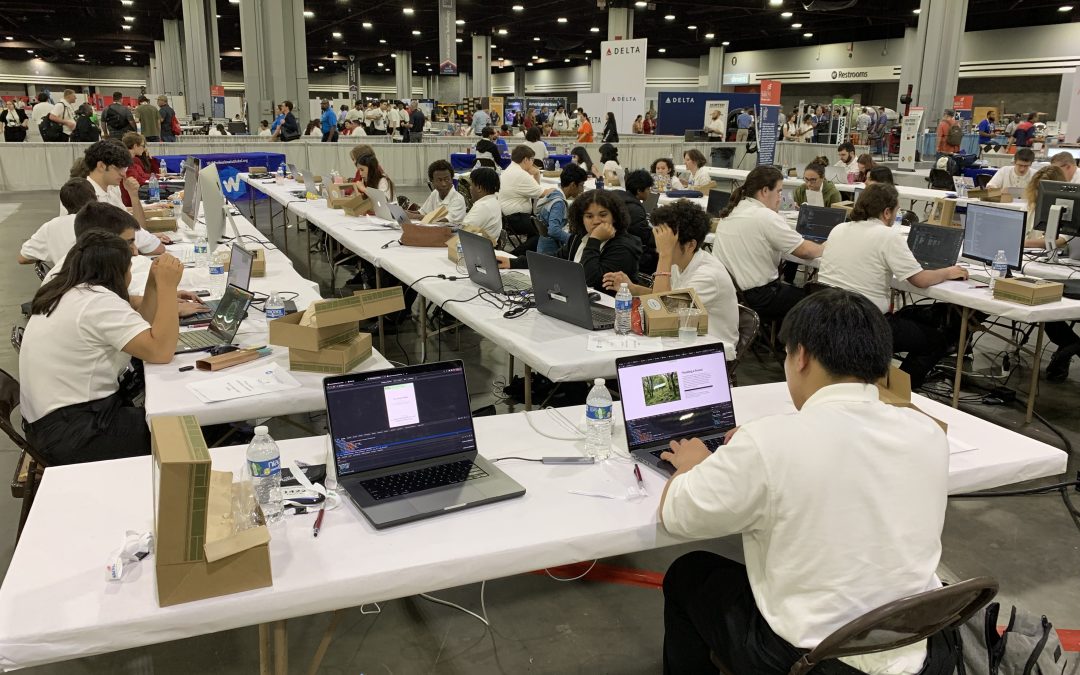
by Mark | Jun 29, 2023 | Web Competitions
Web Professionals Global was proud to once again participate in the 2023 SkillsUSA National Leadership & Skills Conference in Atlanta, GA at the Georgia World Congress Center from June 19-23. Web Professionals Global ran the Web Design and Development competition for the 20th year in a row, providing students from a number of states with the opportunity to participate. This comes on the heels of our organization helping to facilitate some state competitions, the winners of which were invited to the national competition. Check out this previous article on how we helped run the state competitions.
As Executive Director, I (Mark) would like to thank Dave, Bryce, Jonathan and Steve for traveling to Atlanta and helping to put on yet another successful competition. This team has been helping with this competition for years, and we are so grateful. We could not have done it without you.
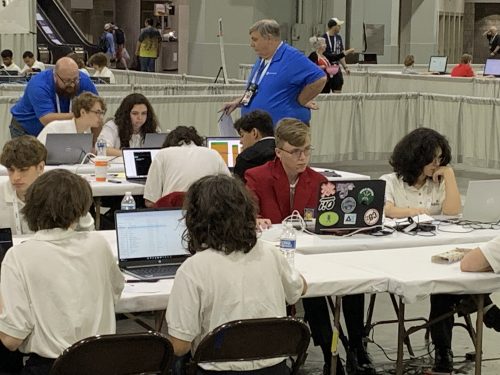
Competition Overview
For those not familiar with how the SkillsUSA National Web Design and Development competition, the competition guidelines were as follows: Teams of two completed a series of challenges focusing on creating a website for a client and a specific target audience. Judging focused on meeting the client’s needs, usability and accessibility, and industry-standard best practices. Teams were evaluated on the process they used to meet the challenges and how well they worked as a team. Teams used the internet to access all competition materials (including the coding environment).
The Web Professionals Global Organization SkillsUSA team provided the students with not only a competitive environment to test their technical skills but also real-world training from real-world professionals and networking opportunities.
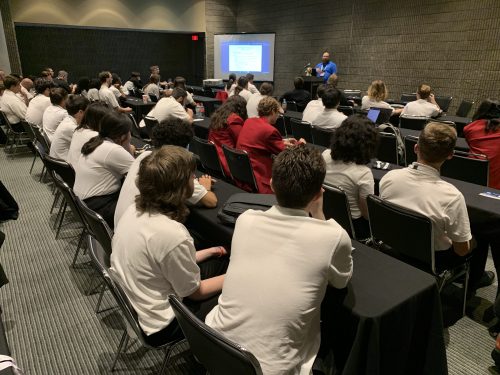
The competition was divided into the following days:
Tuesday, June 20:
This was training day when the secondary and post-secondary teams gained some real world training from Jonathan, the Director of Competitive Events for Web Professionals Global, and me (Mark). We talked about the competition, industry trends, and the web design process from concept to launch.
The competitors were then treated to a lively interactive panel discussion with three local web professionals representing web coding and project management (Angel McCurdy), branding and graphics (Jessica Murphy) and web marketing and entrepreneurship (Shan Thomas). The competitors learned the importance of audience engagement, perseverance, execution and much more.
Wednesday, June 21:
This was the day of the secondary competition for high school students.
Thursday, June 22:
This was the day of the post-secondary competition for college students. We also held a competition debrief at the end of the day.
Friday, June 23:
This was the awards ceremony at State Farm Arena, where 16,880 SkillsUSA competitors, advisors and event runners all showed up for the big reveal of the winners in over 100 different events.
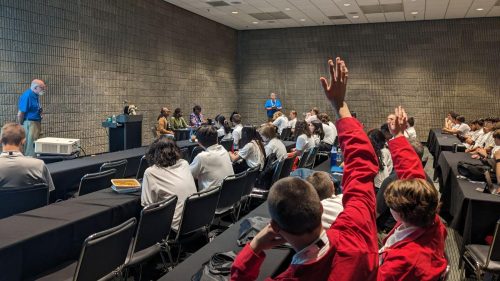
Competition Winners
High School
Gold: Carl Omondi/Jean-Paul Metoyer, Carl Wunsche Senior High School, Spring, TX
Silver: Daniel Cardone/Natalia Vazquez, Blackstone Valley RVTHS, Upton, MA
Bronze: Rhys Jordan/Steven Shoen, Meridian Technical Charter High School, Meridian, ID
College
Gold: Allen Gustrowsky/Brandon Gustrowsky, Southern Adventist University, Collegedale, TN
Silver: Eric Nims/Elizabeth Sheba, Gwinnett Technical College, Lawrenceville, GA
Bronze: Kenli Shaw/Michael Vars, Northwest Kansas Technical College, Goodland, KS

Congratulations to all the winners and participants in the competition. We had an outstanding group of students who all have very bright futures in the industry. In the coming days we will be publishing more articles about the competition, so stay tuned.
Reach out to us today for information on our certification programs and the work we are doing to further the community of web professionals.
Check out more photos from the competition here

by Mark | Jun 15, 2023 | Employment Issues, Web Design, Web Development
In tough economic times, some industries rise while others fall. Industries that make money or help others make money seem to always fare better than others. We have heard how the tech industry has been laying off large numbers of employees and contractors. You can argue much of this is COVID-19 fallout, with companies still fearing a potential recession.
The headcount at Twitter has been reduced by 70% in the past year. Facebook laid off about 13% of employees in 2022, and will probably lay off another 12% in 2023. Other tech companies that have recently reduced workforce numbers include LinkedIn, Amazon, Apple, Netflix, Microsoft, Yahoo, Zoom, Salesforce and more.
However, these figures are just one side of the equation. Looking at the U.S. Bureau of Labor statistics for May, we can see that U.S. tech occupations across the economy increased, and the unemployment rate decreased slightly from 2.1% to 2.0%. The current national average unemployment rate across all occupations is 3.7%. This means that even with big cuts in the large tech companies, we are seeing great resilience in the tech job market as a whole. Specifically, web design and development jobs are as strong as ever.
What Do the Numbers Say?
With all the economic turmoil in the tech sector, is entering a career in web design and development a good idea? Let’s look at the numbers. Overall, employment of web developers and digital designers is projected to grow 23 percent from 2021 to 2031, which is a much faster rate than the average for all occupations. It is estimated that there will be 21,800 openings for web developers and digital designers annually over the next decade. A large portion of these openings will be to replace retiring designers and developers.
So, why is web design and other tech careers growing even in the times of layoffs? Web design and development is key to how companies make money. Every company needs to get its product story to market, which is where the web designers and developers come in. Web design is key to how a company makes money.
Think about it: who are the creative people managing the search engine optimization (SEO) that drives connections with the customers? Who creates the engaging content, graphics and sites that deliver the product story that gets people to buy? The answer is web developers and designers who help to execute marketing in a way that makes a company successful.
What Can I Do With Web Design and Development Skills?
Although many people think of the tech world when it comes to web designers and developers, they are in high demand in virtually all industries including healthcare, energy, manufacturing, telecommunications, financial services, and retail. Put simply, any company or organization that needs to reach a target audience and maintain an online presence must have designers and developers. Those with web design and development skills can work in many different areas including programming, cybersecurity, database management, AI and robotics, graphic design, information security, user experience (UX) and others.
The good news is that a career in web design and development does not require a traditional four-year degree. You can earn certifications, like the ones we offer here at Web Professionals Global, that will demonstrate your skills and set you apart when it comes to proving yourself in the professional working world. If you have a certification (or multiple certifications) and a portfolio of projects you have created, hiring managers will be eager to talk with you because they know you would be starting with them ready to hit the ground running on day one. Plus, many designers and developers work on their own with a variety of different clients and act as their own bosses.
Why is it Important to Be Part of a Community of Professionals?
If you are considering becoming a web design or development professional, take advantage of becoming part of the largest community of web professionals in Web Professionals Global. Our mission is “Community, Education and Certifications,” and we help promote the advancement of all professionals in internet-based careers. We have special programming and certifications for web educators and teachers, and we work with teachers who want help or direction from a local or regional professional as well as independent and remote designers and developers who need advice running their own business. Web Professionals Global really is the one-stop shop for those in internet-based careers at any level.
Start Your Career Today
Whether you are a teacher looking for web design and development certifications for your students, or you are an adult seeking to transition into a new career, we can help. Reach out to us today to learn how Web Professionals Global can assist you in advancing your career.

by Mark | May 31, 2023 | AI and Machine Learning, CSS3, JavaScript, Web Accessibility
Hard to believe we are almost at the middle of 2023. Time flies. As we prepare for our 20th national web design and development competition in Atlanta (beginning June 20), we thought it might be useful to share some of the articles we have been reading.
AI and images
Before we cover those articles, we feel it is important to mention our featured image. This was generated using Adobe FireFly. We used the following text to have the image generated. Note that we were rather specific in what we asked for (and the technology complied).
Looking at a desktop holding a phone, tablet and laptop along with a notebook with a pen. The desktop has one succulent plant. Sunlight is coming through a window to the left of the desktop.
If you expand the image, you will note that there is a tag assigned in the lower left corner indicating this image was generated using AI. We never cease to be amazed at how quickly one can create images (and how detailed they are).
We recently became members of the Content Authenticity Initiative. As we have mentioned in earlier weblog posts, the purpose is “to provide media transparency to allow for better evaluation of content.” We encourage readers to check out this initiative (and consider becoming members). In our view, as AI generated images become more prevalent, it is important to inform everyone that the image has been computer generated. We view this in a vein similar to copyrights. If one uses something that has not been created by the author, it is important to inform (and respect) where the images come from. That is why we commit to not only providing the source, but the text used to generate these images.
Accessibility
For those who missed it, May 19 marked Global Accessibility Awareness Day. The GAAD Foundation was launched in 2021 to mark the 10th anniversary. The focus is to make accessibility a core requirement. We encourage you to review the site (and focus on accessibility every day, not just May 19th).
CSS
We recently encountered a nice review of what’s new in CSS and UI. The article outlines 20 recent developments.These include responsive design improvements (such as container queries and style queries). The :has( ) selector lets one check if a parent element has specific children. There are many other enhancements which professionals can take advantage of (either now or very soon). We encourage readers to review the article to learn more about changes happening this year.
Also, we recently learned that scoped CSS is back. “Scoped styles allow you to contain a set of styles within a single component on the page.” We encourage readers to review the capabilities discussed in this article. Some nice examples are also provided.
We also came across this article (written in January) discussing new CSS relative units. Did you know there are roughly 50 CSS length units?
JavaScript
We recently encountered this nice overview of new JavaScript features coming in ECMAScript 2023. Many of these changes may have significant uses in your code. For example, change array by copy and array find from last. In addition to these smaller proposals, there are 4 larger ones. These include iterator helpers, temporal, decorators, and making resource management obvious.
National Web Competition
This year marks our 20th year of providing a national web design and development competition with SkillsUSA (yes, we started as a demonstration competition in 2004) and we have been running this ever since (even during the pandemic). We could not do this without the help of many people. We really appreciate their help and are posting additional articles. We managed to provide assistance to a number of states this year. We hope to see the winners of those state competitions at our national competition in June.
Feedback please!
That is what we found interesting this month. As always, we are keen to learn what you found interesting (and what you would like to learn more about). Please let us know in the comments.
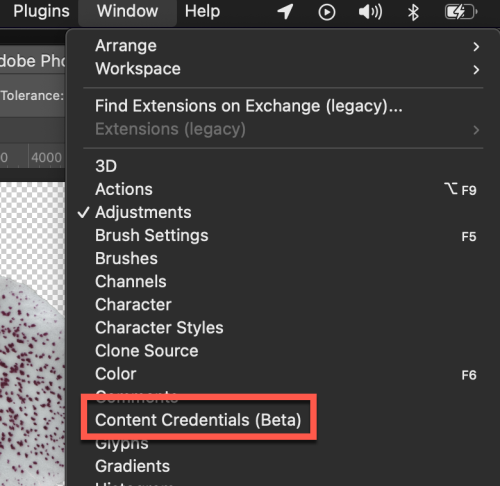
by Mark | May 24, 2023 | AI and Machine Learning, Content Strategy
As readers know, we live in the age of significant disinformation. From political campaigns in various nations to recent untrue reports of an explosion at the Pentagon, such misinformation is meant to sow distrust, confusion, and other malicious intents. Given the rise of artificial intelligence (large language models) and the ease of creating images, video, audio and more, we at Web Professionals Global have joined the Content Authenticity Initiative. [Like all links, this will open in a new browser tab.] You might have to scroll a bit as there are now over 1,000 members of this initiative (organizations and citizens).
What is CAI?
Essentially, CAI (Content Authenticity Initiative) is a community of tech companies, non-governmental organizations (like Web Professionals Global), academics and others working to “promote adoption of an open industry standard for content authenticity and provenance.” What is the source of the image, video, audio in question? How was it created? If something has been tampered with, this is tracked and evident when examining the meta data. If you are not a member, we encourage you to join (either as an individual or a company). We are all about community (it is the first item in our tag line). We also believe strongly in copy rights as well as origin of media. CAI easily fits into our world view.
Not only will this help disprove misleading information, these tools can also help verify atrocities being committed. There are even apps one can include on a mobile phone which can be used to prove the provenance of any image taken by that device (and any subsequent manipulation).
An example (how to get started)
If you are using tools like Photoshop 2023 or Lightroom 2023, new capabilities exist to help with content. For our purposes, let’s use Photoshop. First, one needs to enable this beta capability. From the main menu, select Window > Content Credentials (Beta).

You then enable content credentials and link to your social media accounts. In this case, I have linked both our Twitter feed and Instagram feed. This provides and identifies references for individuals viewing your work.
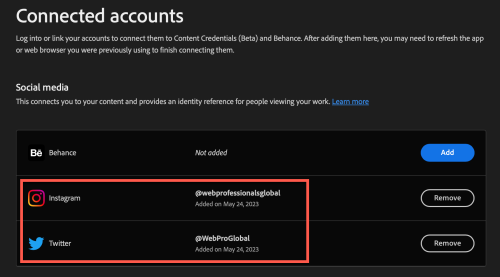
One can also choose to publish your content credentials to the cloud. The alternative is to attach them to your files (which would increase the file size of each file). When you refresh the Content Credentials panel, one would see the linked accounts in Photoshop.
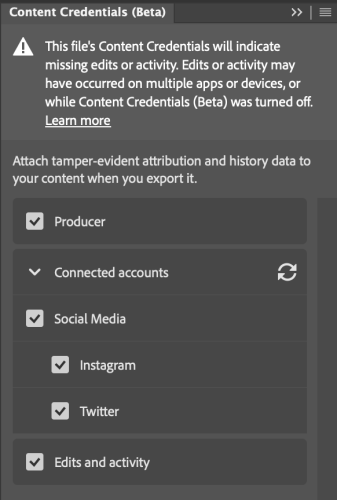
When you work with images, you can then preserve the content credentials as part of your file saving/exporting process. In this case, I removed the background from one of my orchid photos (generated by stacking a number of images together). Before exporting, these are some of the data one can include.

Ok, content credentials are now in the meta data. Now what?
Inspecting images
Perhaps one encounters the stacked image of an orchid online. We all know it is not possible to take a macro photo of a flower with such detail unless there has been some manipulation. One can use a tool like Verify (at the Content Authenticity Initiative site) to learn more about the image. Note that the image is being examined on your local computer (and is not being uploaded during this checking process). This is what I see when I examine the orchid image.
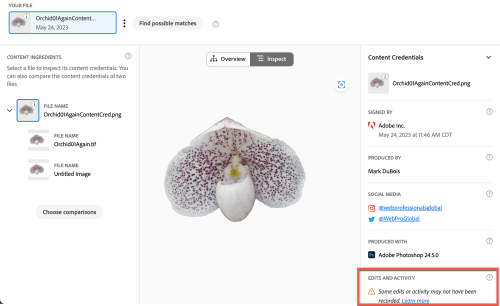
Note that there is recognition that there have been prior edits to this image (before the CAI was activated). However, one can also see the additional information. In addition to the inspection tab, there is an overview (for those who like to see the origins).
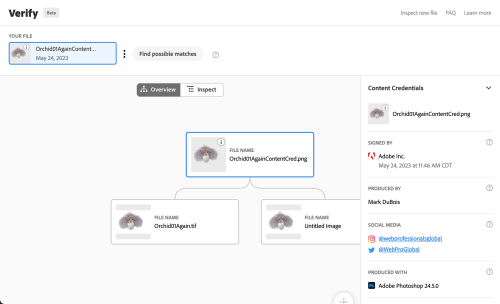
Of course, that was an overview of my efforts working with actual images. What about AI-generated images?
AI and C2PA
Tools (like Adobe Firefly) utilize open-source tools (C2PA in this case). If you follow the link to C2PA, there is an introduction video. Without going into all the weeds, here is what one sees when testing the content authenticity of a Firefly-generated image. Note, there is no visual overview as this was just machine-generated. One can clearly see the origin of the image.
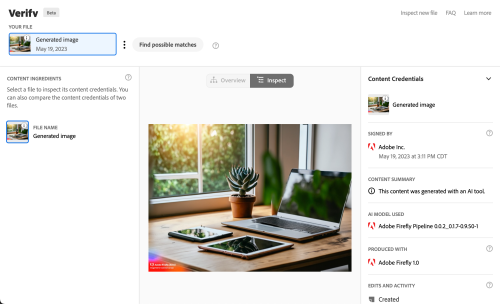
Perhaps the CAI will help us better deal with the wave of misinformation being generated. Time will tell. In the interim, we encourage you to try out these open-source tools. As always, we are curious what you think. Let us know in the comments.
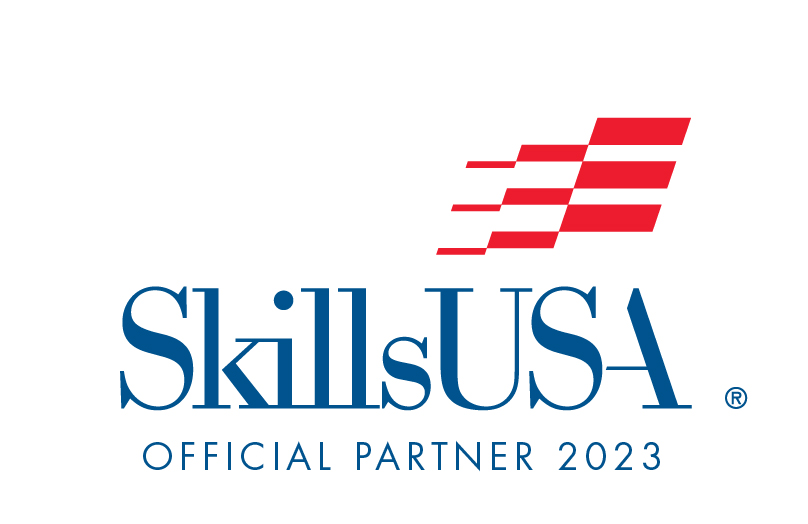
by Steve Waddell | May 23, 2023 | Web Competitions
Web Professionals Global is proud to support state SkillUSA web design and development competitions for a second year in 2023 ahead of the national competition in June in Atlanta, GA. Before continuing on, check out our article from last year outlining the new and streamlined model we created so states could more easily run their own competitions.
Competitions can be run in person or entirely online, making it easy for more students to join and participate in each state. Not only does the new approach make it easier for any state to run their own web design and development competition, but it also ensures that every state is conducting their own competition to prepare students for the national competition. This model gives all states the same turnkey resources to ensure a successful competition that engages students.
This is the second year for Web Professionals Global supplying turn-key competitions to the state SkillsUSA event teams. Each year we double the number of states who take advantage of our competition package. We are also seeing the results. For states that used our materials in 2022 and again this year, we could see improvements in competitors building their skills to help them better compete at the national competition.
What does the Web Professionals Global Competition pack include?
Competitor Support
- Online web design exam similar to what the competitors might see at nationals
- Competition project with client assets and judging rubrics
- Handouts for competitors with overview and links to resources
- Online development environment “IDE” for each competitive team
State Event Team and Judge Support
With easy access to competitor IDEs, judges can quickly judge the websites. Judge training videos aligned to the state level competition help them understand how to use the scoring rubric to judge similar to how the national event is judged. There is also a competition scoring rubric tied to the unique competition problem “The Work Order.” And national event team mentors access allows state-level event coordinators to get extra help running their state events.
“The Web Professionals Global Organization wants to thank all of the Web Design National Event team members who helped us build this year’s state competition package and support the state competition event teams. I would like to give a special thanks to Jonathan for his fantastic problem design.” – Mark DuBois, Executive Director of WebProfessionalsGlobal.org and Tech Chair for National SkillsUSA Web Design and Development competition.
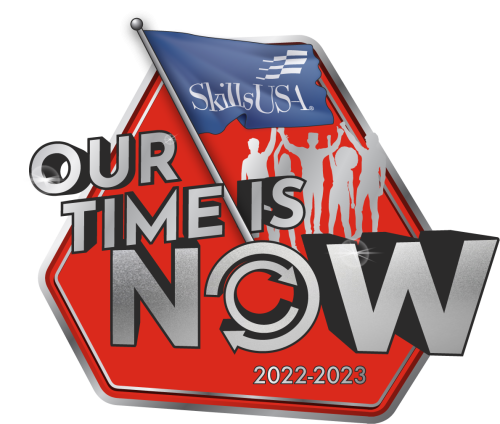
Shout out to the coordinators and their event teams in MD, LA, TX, IN, KY, NV, OK and IL, which all had the chance to experience a competitive event that best prepares them for the national competition.
The states we worked with had great things to say about this model and working with Web Professionals Global. Here are several testimonials:
Mark, your platform and contest is very well-designed and easy to use. The students truly loved competing in this contest! I can’t wait to see what you all have for nationals as well. It’s going to be wonderful! We thoroughly enjoyed the integration into this year’s contest and look forward to working with you again on next year’s contest!” – Renee Blackshear, Instructor, Statewide Faculty Senate, SkillsUSA Texas
“The supplied client assets and coding environment were easy to use, and the collaborative piece between team members was invaluable for them to see real-time results. Mark and his team were invaluable in not only providing a real-time environment for students to code a website, but their attention to detail is impeccable. They are readily available to answer any questions and offered tips in advance to help the competition run as smoothly as possible. They made me feel much more comfortable knowing they were a phone call or email away. I would highly recommend using their product for any web design competition.” – Matt MacKay, WCSD Signature Academies & CTE Department, Nevada
Below is the full completed schedule for the 2023 state competitions:
Maryland: March 25
Louisiana: March 30
Texas: March 31 and April 14
Indiana: April 15
Kentucky: April 20
Nevada: April 20
Oklahoma: April 24
Illinois: April 28
If you are interested in working with Web Professionals Global to run your own state web design and development competition, contact us today.

by Steve Waddell | May 15, 2023 | Education, Web Development
So, the district “powers that be” come to you with a great idea. Why don’t you start a coding course next year? Why not add a prep to your schedule on a topic that you may not be familiar with? Sound familiar? We have educators contact us all the time to talk about this very topic.
Most of the time the conversations start with a discussion about what language they should use. Java, JavaScript, Python, C#, or even Basic? Now this is not a terrible place to begin, but to me it feels a little cart before the horse-ish. Why? Well, students, if you have not noticed, have changed a bit over the last few years, and so has the code development world.
10-15 years ago, you could get most students excited about coding. All you had to do was show them that they could make a game or control something on the screen to intrigue them. Thanks to the newness, students would put in the effort learning coding to make it all happen.
Students have changed in that it now feels as though you need to convince them more to put in the effort. You have to work harder to get that initial engagement and then you have to keep up the work to maintain allure long enough to get the learner over the hump and value the learning.
I tell teachers who have tried to teach coding classes that “It is all fun and games until logic shows up.” Any teacher who has taught coding knows exactly what I am saying. When you are teaching programming, you tend to lose students when the logic aspect comes up. Everyone learns logic at a different pace. However, there are ways to give students confidence in being able to code and get them engaged without letting logic knock them off the path. 
This is why one alternative path to introducing coding is through HTML (HyperText Markup Language). HTML allows you to engage learners in that you can use words and commands in a “language” to boss a computer around to do your bidding. Sometimes you have to let the students go on a little power trip. In reality, HTML as a language allows the learner to boss around a browser. Think about it: there are 4.9 billion active internet users worldwide. That’s 62% of the world’s total population. 500,000 new internet users show up every day to join those ranks. What is the primary language used for all the content those nearly 5 billion internet users see? HTML, which is the language of the internet.
This means the demand for web design is huge. Every business, large and small, needs a website and someone to create it and maintain it. This opens up real opportunities for students with the basic skills, passion and certifications. This is no joke, as web designers can start their careers while still in high school. Check out our blog post < > then share this post with your students.
Like I said before, I have a couple ways I like to introduce coding to newcomers. One is robotics, and anyone who has spent any time around me knows how much I love the topic and the potential of robotics. However, robotics requires hardware and software, which drives up the cost. HTML is a very budget-friendly way to introduce coding. You can do it with nothing more than a simple text editor or online IDE. Since the target for the code is a browser, any PC, Mac or Chromebook has all that it takes to make the magic happen.
Still not convinced? Give me another moment to make my case. Let’s look at some facts about using HTML and how it can inspire the next generation of creators, designers and coders.
Why is HTML a great introduction to coding?
Simple syntax: HTML uses simple and easy-to-understand tags to define the structure and appearance of web content. This allows beginners to quickly grasp the basics and start creating simple web pages.
Immediate feedback: With HTML, you can see the results of your work in a web browser almost instantly. This immediate feedback loop makes it easy to experiment and learn from your mistakes.
Wide applicability: HTML is the foundational language for the web. Learning HTML provides a solid foundation for understanding other web technologies, like CSS and JavaScript, which are necessary for creating more interactive and dynamic web pages.
Extensive resources: There is a wealth of resources available online for learning HTML, from tutorials and documentation to forums and video courses. This makes it easy for beginners to find support and guidance as they learn.
Cross-platform compatibility: HTML code can be written and executed on any platform with a web browser, making it accessible to a wide range of devices and operating systems.
Collaboration opportunities: Learning HTML can open up opportunities for collaboration with other web developers, designers, and programmers. Understanding HTML is often a prerequisite for working on web projects, even if your primary focus is in another area of coding or design.
In-demand skill: HTML is an essential skill for a variety of careers in web development, web design, and digital marketing. Learning HTML can be a stepping stone to a rewarding and in-demand career.
Overall, HTML is an excellent starting point for beginners because of its simplicity, widespread use, and the numerous resources available for learning. It sets a solid foundation for further exploration into web technologies and programming languages. The beautiful part of working with HTML and browsers is that one can view the source code to learn how someone accomplished what you see. Yes, there are instances where code is minified or obfuscated, but many sites still display code which can be viewed (so you can always learn from others).
How prevalent is the use of HTML and CSS?
HTML and CSS are extremely prevalent in the world of web development, as they form the foundation of every website on the internet. HTML (HyperText Markup Language) is used to create the structure and content of web pages, while CSS (Cascading Style Sheets) is responsible for the visual appearance, including layout, colors, fonts, and other design elements. Together, they define how web pages are built, displayed, and rendered in web browsers.
In practice, HTML and CSS are used in virtually every web development project, from simple personal blogs to complex web applications and platforms. They are essential skills for web developers, web designers, and other professionals working with web technologies. Additionally, HTML and CSS knowledge is often required or beneficial for professionals in digital marketing, content management, and user experience (UX) design, as these roles often involve working with website content and layout.
The wide applicability and use of HTML and CSS in the web development industry make them two of the most important languages to learn for anyone interested in working with websites or web applications.

What are the benefits to learning both HTML and CSS?
Complementary technologies: HTML and CSS work together to create the structure and design of web pages. HTML provides the content and basic structure, while CSS is responsible for the layout, colors, fonts, and other visual aspects. Learning both languages in tandem provides a comprehensive understanding of how web pages are built and designed.
Simplicity and readability: Both HTML and CSS have simple and human-readable syntax, making them easy for beginners to understand and start working with. Unlike many programming languages, HTML and CSS do not require knowledge of complex logic, data structures, or algorithms.
Immediate visual feedback: As you work with HTML and CSS, you can quickly see the results of your changes in a web browser. This immediate feedback loop helps beginners understand the relationship between the code they write and the visual output, making the learning process more engaging and enjoyable.
Fundamental web technologies: HTML and CSS are the building blocks of the web. By learning these languages, you’ll gain a solid foundation for understanding more advanced web technologies, such as JavaScript (which is employed to affect the behavior of a web page), and for learning other programming languages (such as those which work on a server and interpret the information submitted from a web page).
Abundant resources and community: There are countless resources available for learning HTML and CSS, ranging from online tutorials and documentation to forums, video courses, and books. Additionally, the web development community is extensive and supportive, making it easy for beginners to find help when needed.
Cross-platform compatibility: HTML and CSS can be used across different platforms, devices, and operating systems, making your skills applicable in a wide range of contexts.
Marketable skills: Proficiency in HTML and CSS is valuable for various careers, including web development, web design, digital marketing, and content management. Learning these languages can open doors to new opportunities and help you build a strong foundation for a career in tech.
In summary, HTML and CSS are a great first step to learning coding because they offer a simple, visual, and accessible introduction to web development. They provide a solid foundation for understanding more advanced web technologies and programming languages, and they offer valuable skills for those interested in pursuing a career in the tech industry.
How can teachers use HTML with their students?
Teachers can use HTML as a way to introduce coding to their students in various ways, including:
Start with the basics: Teachers can begin by explaining the fundamentals of the web, including the role of HTML as the structure and content provider for web pages. Introducing basic HTML tags, such as headings, paragraphs, and lists, allows students to learn the syntax and structure of HTML.
Utilize hands-on exercises: Encourage students to create simple web pages using HTML, providing them with templates or examples to start. This hands-on approach helps students understand the relationship between the code they write and the visual output in a browser. And, don’t forget to make the portfolio-building exercises career-relevant, and fun for students.
Include industry-based certifications: One way to make sure the students realize what they are learning is relevant to their futures is to connect the curriculum with certifications from industry, and not just some testing platform. This is also a sure way to get the parents excited about your program.
Integrate with other subjects: Teachers can incorporate HTML into lessons related to other subjects, such as English, history, or art, by having students create web pages to present their projects or research. This can make learning HTML more engaging and relevant to their interests.
Integrate with complimentary careers: The right curricula will offer ways to connect with other careers. For example, with web design it is easy to see how a web animation or web and mobile game course will complement what the students are learning and give them the chance to see other web careers.
Pair with CSS: Introduce CSS alongside HTML, so students can learn how the two languages work together to create visually appealing web pages. This can help them understand the importance of both structure and design in web development.
Use online resources: Utilize curriculum with interactive tutorials, coding sandboxes, and video lessons to provide students with various learning options. These resources can help students learn at their own pace and explore topics that interest them.
Encourage creativity and experimentation: Provided that the interactive curriculum you use allows for sandboxing the coding your students will be more likely to experiment with different HTML tags and CSS properties, encouraging them to explore various design options, be more creative problem solvers, and find their unique style.
Utilize collaborative projects: Encourage students to work together on web-based projects, such as creating a class website or online portfolio. This is how the work world operates. Coding and design is a team sport, and this can help students learn from each other and develop teamwork and problem-solving skills.
Introduce web accessibility: Teach students about the importance of web accessibility and how to create accessible web content using HTML. This can help them understand the broader impact of their work and the importance of inclusive design.
Keep it real: Use projects and activities that challenge the learner to apply what they have learned to real-world scenarios. This can help identify areas where students may need additional support or practice, keep everything within an industry context, and build a robust portfolio showing the learner’s growth in web coding.
Discuss career opportunities: Highlight the various career paths that involve web development and the importance of HTML in these roles. This can help students understand the value of learning HTML and motivate them to explore further coding languages and technologies.
By using these approaches, teachers can effectively introduce coding to their students through HTML, providing them with a solid foundation for further learning in web development and programming.
Whether you are a teacher, parent or student, contact Web Professionals Global today to find out how our organization and certifications can help you.


























